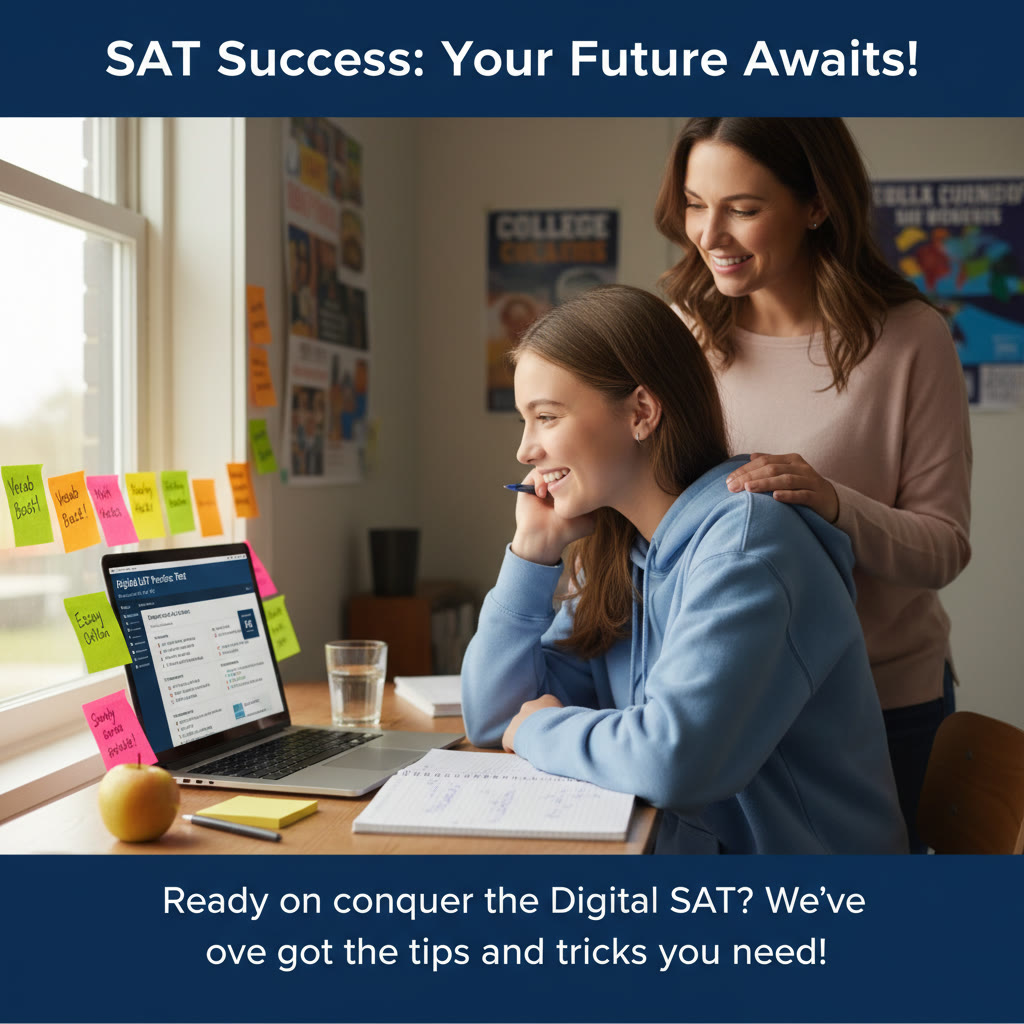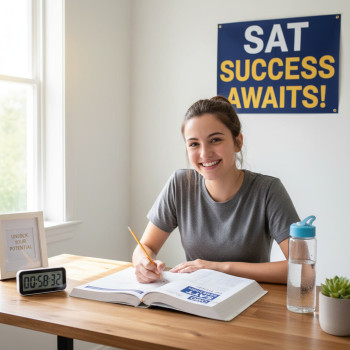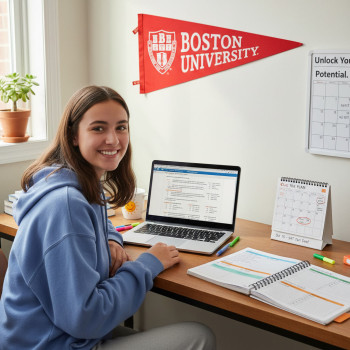Why SAT Scores Still Matter for Top Engineering Colleges (Even in a Changing Landscape)
Ask most college counselors and admissions-savvy parents what still moves the needle in engineering admissions, and SAT scores will come up almost immediately. Test policies have evolved—many institutions flirted with test-optional choices during the pandemic—but for highly competitive engineering programs, a strong SAT (now the Digital SAT) often remains one of the clearest, comparable metrics admissions officers use to evaluate applicants from diverse schools and curricula.
This guide is written for students dreaming about a top engineering program and for the parents supporting them. We’ll translate the numbers you see in rankings into practical action: how to set a target score, where those targets come from, and how to create a prep strategy that fits your life (yes, life—because balance matters). We’ll also highlight how individual, tailored help—like Sparkl’s personalized tutoring and data-driven study plans—can make a measurable difference when you’re aiming for the most selective schools.

Understanding the Data: What “Top Engineering Colleges Ranked by SAT Scores” Really Means
When colleges are ranked by SAT scores, you’ll typically see ranges—25th, 75th percentiles, and sometimes a middle 50% range—rather than a single number. Those percentiles tell you where the bulk of admitted students score, and they help you judge fit:
- 25th percentile: If you’re at this score, you are at the lower end of admitted students but still within the range.
- 50th percentile (median): The ‘middle’—a realistic, comfortable spot for many admits.
- 75th percentile: You’re above most admitted students and are more likely to be competitive, especially when paired with a strong application
For engineering programs, especially those at nationally top-ranked universities, the middle 50% SAT range often skews higher than the campus-wide average because engineering applicant pools tend to be academically stronger in math and science. That’s why it’s helpful to target an SAT score that matches the engineering school’s engineering-specific profile rather than a broad institutional average.
Snapshot Table: Typical SAT Ranges for Competitive Engineering Programs
Below is a synthetic, illustrative table showing typical SAT ranges (middle 50%) you might expect from highly selective engineering colleges. Note: these ranges are meant to help you set realistic targets; for exact, current figures, check each college’s official published data or the College Board profiles.
| Category | Typical Middle 50% SAT Range (Total) | What This Means |
|---|---|---|
| Ultra-Selective Engineering Programs (Ivy/Elite Tech) | 1460–1570 | Top-tier applicants; excellent academic profiles and rigorous coursework. |
| Very Competitive Public and Private Programs | 1400–1500 | Strong applicants often with AP/IB coursework and research or internships. |
| Selective Regional Engineering Schools | 1320–1420 | Competitive candidates with solid coursework and meaningful extracurriculars. |
| Broadly Accessible Programs with Strong Outcomes | 1200–1350 | Good fit for students with strong potential and interest in applied engineering. |
How to Read This Table
The ranges above are approximate. A 1450 at one top program might be more competitive than the same 1450 at another, depending on class profile, major demand, and holistic factors. Use these numbers as a ladder: pick a reach, match, and safety zone based on the schools you love.
How to Set Your Personal SAT Target
Start with the schools you love. For each one, find the middle 50% SAT range for admitted students and then position yourself strategically:
- Reach schools: Plan to be at or above the 75th percentile to improve admission odds.
- Match schools: Aim for the 50th–75th percentile range.
- Safety schools: Be comfortably above the 50th percentile for peace of mind.
Example: If the engineering program’s middle 50% is 1400–1500, aim for at least 1500 to be strongly competitive. If your current practice tests are averaging 1350, build a timeline and study plan that realistically closes that gap, usually 3–6 months of focused work for a motivated student.
Beyond the Number: What Top Engineering Programs Look for
Admissions committees don’t just add numbers. For students applying to engineering, they look for:
- Math rigor: Calculus or multivariable calculus when available, AP/IB math, strong grades in STEM subjects.
- Project experience: Robotics, coding projects, research, or internships that show applied curiosity.
- Letters of recommendation that highlight intellectual engagement and persistence.
- Clear intent in essays: Why engineering? What problem will you pursue?
- Supplemental materials (when allowed): portfolios or research summaries that demonstrate technical depth.
So while a high SAT is a powerful signal, it’s most effective when it complements strong coursework, meaningful projects, and a story that ties a student’s academic interests to real-world ambitions.

Practical Roadmap: From Practice Tests to Test Day
Turning raw potential into a polished SAT score requires structure. Here’s a step-by-step approach students and parents can use.
1. Take a Diagnostic Digital SAT
Start with a full-length, timed diagnostic under realistic conditions. This identifies strengths (e.g., math problem solving) and weaknesses (e.g., time management in reading).
2. Build a Study Calendar
- Frequency: 3–5 practice sessions per week, mixing full sections and focused drills.
- Duration: 8–16 weeks for most improvements; more time for larger score jumps.
- Balance: Combine content review, targeted practice, and at least 3 full-length digital practice tests.
3. Use High-Quality, Official Practice
Official practice materials reflect the format and scoring rules. Digital practice is essential: the Digital SAT feels different—adaptive sections and new navigation—so get comfortable with the delivery system.
4. Focus on Error Patterns, Not Just Time Spent
Record mistakes and categorize them (conceptual, careless, timing). If you miss algebraic manipulations consistently, prioritize daily targeted drills. If timing is the issue, practice mock sections with pacing strategies.
5. Simulate Test Conditions
At least three full Digital SAT practice tests within your final month: same timing, same device type if possible, same uninterrupted environment. Review each thoroughly—don’t just take tests; learn from them.
Where Personalized Tutoring Helps Most
Generic study plans help some students, but others benefit massively from individualized coaching. Personalized tutoring is particularly valuable when:
- You need a focused plan to close a specific score gap (e.g., +100–200 points).
- There are learning differences or test anxiety that require techniques beyond textbooks.
- You want accountability and adaptive strategies tied to practice data.
Sparkl’s personalized tutoring emphasizes 1-on-1 guidance, tailored study plans, expert tutors, and AI-driven insights to pinpoint what matters most for each student. That combination—human coaching informed by data—helps many students make efficient progress without burning out.
Timeframes: How Long Does It Take to Improve Your SAT Score?
There’s no single answer. A few guiding examples:
- Small bump (20–60 points): 4–8 weeks of focused practice on weak areas.
- Moderate improvement (80–150 points): 2–4 months with structured study and at least weekly full tests.
- Large improvement (150+ points): 4–9 months combining tutoring, coursework review, and consistent full-length practice.
Key point: consistency beats cramming. Regular practice with targeted feedback compounds faster than sporadic long sessions.
Holistic Examples: Three Student Profiles and Strategies
Profile A — Maya: Math-Strong, Time-Poor
Maya is excellent at math (scoring mostly perfect on problem-solving) but struggles to finish reading sections. Her diagnostic total is 1400, target 1500 for a top engineering program.
- Strategy: Focused reading timing drills (two short daily sessions), targeted vocabulary-in-context practice, and two full-length practices per month.
- Outcome Goal: +100 with improved pacing in 8–10 weeks.
Profile B — Elias: Balanced, Needs Edge
Elias scores evenly across sections at 1450 but wants to push to 1540. He’s competitive academically but needs the top percentile to strengthen his application.
- Strategy: Advanced math problem sets, targeted evidence-based reading strategies, and a personalized plan from a tutor who can push conceptual depth and test strategy.
- Sparkl Fit: A tutor who integrates Elias’s AP coursework into SAT strategy would increase efficiency and relevance.
Profile C — Priya: Late Starter
Priya decides late in junior year to pursue elite engineering programs. She has strong grades but a 1280 diagnostic.
- Strategy: Intensive 4–6 month plan with weekly 1-on-1 tutoring, daily targeted practice sessions, and progressive full tests to build stamina.
- Outcome Goal: Move into 1350–1450 range initially, then refine further toward target with iterative tutoring.
Navigating Test-Optional Policies: When to Submit Scores
Many schools now accept applications without SAT scores, but that doesn’t always mean you should skip submitting scores:
- If your SAT score is within or above a program’s middle 50%, submit it to strengthen your numeric standing.
- If standardized testing isn’t reflective of your strengths but your transcript and extracurriculars are stellar, consider test-optional—but weigh scholarship criteria (some scholarships still use scores).
- If you’re aiming for engineering merit scholarships or honors programs, a strong SAT can be instrumental.
When in doubt, consult the college’s current policy and reach out to admissions or a counselor to understand how they view scores for engineering applicants.
Applications Beyond Scores: Essays, Projects, and Recommendations
Top engineering programs read applications holistically. Here’s how to build a compelling narrative around your SAT score:
- Essays: Use one essay to tell a story about a technical curiosity—coding a project, fixing mechanical systems, or a science fair project that sparked a career idea.
- Project Portfolios: If you have a GitHub, research poster, or engineering portfolio, summarize it clearly and tie it to future goals.
- Recommendations: Ask teachers who can speak to your technical growth and problem-solving persistence, not just general praise.
Sample College Application Game Plan for a Competitive Engineering Applicant
Here’s a month-by-month blueprint for a student with 9 months until application deadlines:
- Months 1–3: Diagnostic tests, foundational review, targeted workshops (algebra/geometry/core grammar), begin weekly tutoring sessions if needed.
- Months 4–6: Increase full-length practice to every 2–3 weeks, refine timing strategies, begin drafting engineering-centered essays, collect project artifacts.
- Months 7–8: Polished essays, one final intensive practice test cycle, submit any optional score reports based on performance.
- Month 9: Final touches—submit applications, confirm recommendations, and prepare for interviews or portfolio uploads.
How to Use Practice Data Wisely (and Not Become Overwhelmed)
Practice tests generate lots of numbers. Focus on a few high-leverage metrics:
- Section accuracy by question type (e.g., algebra vs. geometry).
- Pacing: percent of sections finished vs. attempted.
- Error types: careless, conceptual, or strategy-related.
Change your study plan only when you have clear evidence of progress. Small, consistent improvements are more sustainable than erratic score spikes.
Final Test Day Tips for the Digital SAT
- Familiarize yourself with the digital testing platform well before test day.
- Bring necessary tech readiness: fully charged device, approved calculator (if allowed), and practice with the same display size if possible.
- Rest the night before—sleep and nutrition affect cognitive stamina as much as practice.
- Use warm-ups: a short math problem set and light reading before logging in helps steady focus.
Putting It All Together: Realistic Expectations and Maintaining Balance
Getting into a top engineering program is an ambitious goal, but it’s also a process. SAT scores are a central metric, yet they’re one part of a broader picture that includes coursework, projects, essays, and recommendations. Set a realistic timeline, use data from practice tests to guide your study, and consider personalized, human-centered coaching to accelerate progress. Sparkl’s blend of 1-on-1 guidance, tailored study plans, expert tutors, and AI-driven insights is an example of how focused support transforms hours of study into measurable gains—without losing sight of mental well-being and school obligations.
Takeaway Checklist: Your Next Steps
- Find the middle 50% SAT ranges for the engineering programs you love.
- Take a full Digital SAT diagnostic and set a tailored target score (reach/match/safety).
- Create a study plan with a balance of content review, strategy, and full-length digital practice.
- Consider personalized tutoring if you need focused, efficient progress—especially for large score goals.
- Build the rest of your application around clear technical interests: projects, essays, and recommendations.
- Decide whether to submit scores based on how they compare to program ranges and scholarship criteria.
Final Encouragement
Remember: admissions is a marathon, not a sprint. Scores matter, but so does persistence. Whether you’re raising your SAT by 50 points or 200, each deliberate practice session moves you closer. Keep your curiosity alive—engineers solve problems, and applying to engineering programs is your first design challenge. With planning, honest self-assessment, and the right support, you’ll present a strong, authentic application that shows admissions committees not only what you know, but who you are.
Ready to Start?
If you want help turning your SAT goal into a step-by-step plan, consider scheduling a diagnostic and personalized study plan. Tailored guidance—like Sparkl’s 1-on-1 tutoring and AI-informed study tracking—can make the difference between dreaming about a top engineering school and getting in. Good luck: the problem you’ll solve next might be the one that changes everything.















No Comments
Leave a comment Cancel